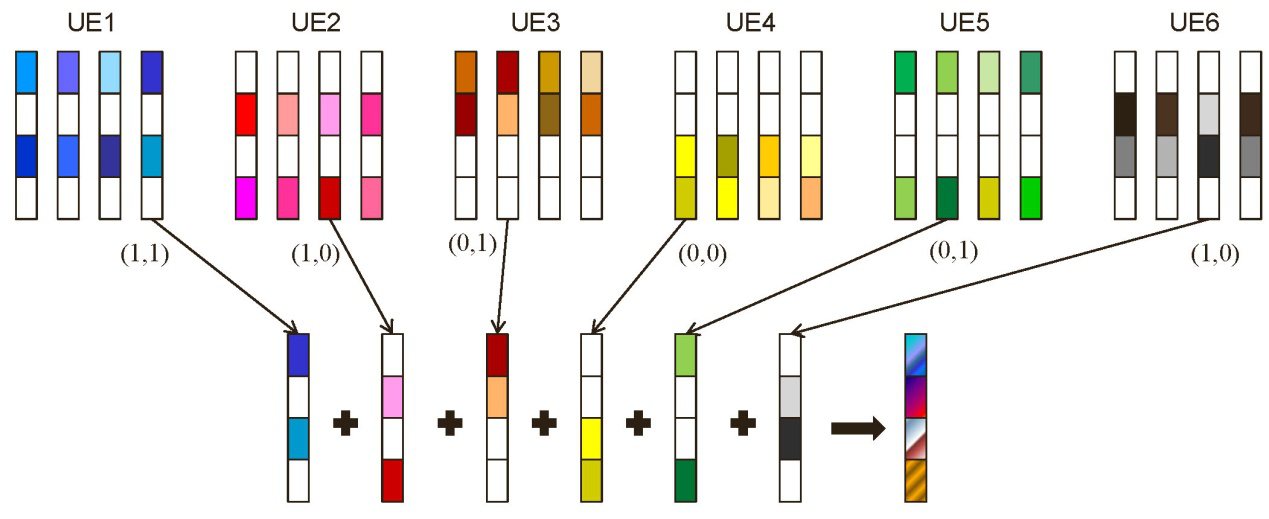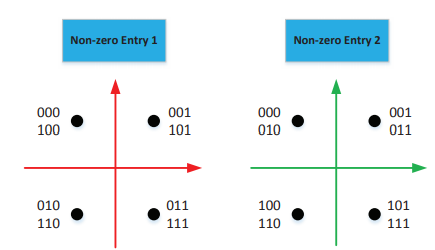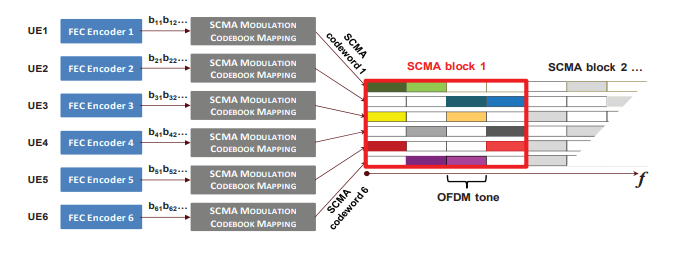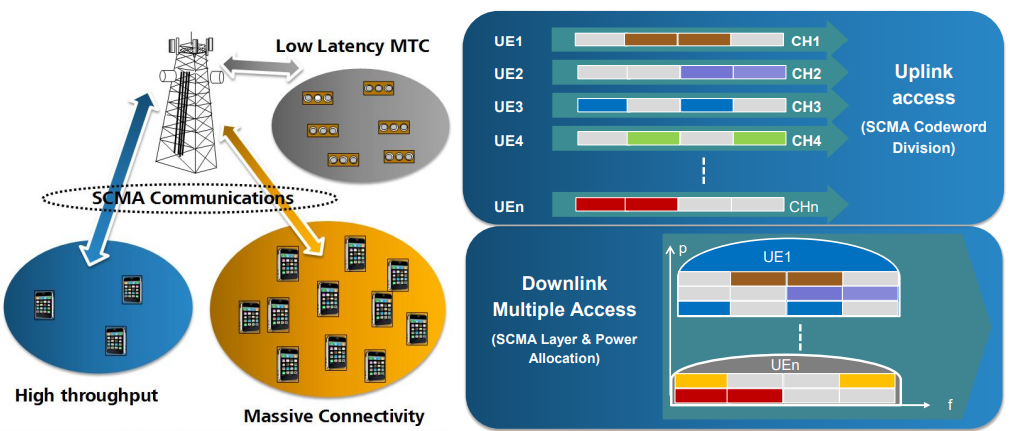Introduction
New Radio (NR) is a newly approved study item in 3GPP, focusing on the design of the next generation (5G) air interface. 5G air interface is intended for having faster access, higher transmission rates, support of larger user density, and overall better user experience.
At the same time, 5G connects to new vertical industries and devices, resulting in creating new application scenarios like mMTC and URLLC services. This happens by supporting a huge number of devices and enabling mission-critical transmissions through super high reliability and super low latency requirement, respectively.
Multiple Access for Physical Layer
Multiple access is among the core physical layer technologies of wireless communications, which enables wireless base stations to identify a large number of different terminal users and serve them simultaneously.
Nowadays, many systems choose to use orthogonal multiple access method, which means users are orthogonal to each other in at least one radio resource dimension (for example, frequency, time, code. and etc.).
The OFDMA technology used in 4G systems is one example, in which radio resources are divided into two-dimensional time-frequency grids and each grid can only be used by one user at a time.
In NR, Sparse code multiple access (SCMA) is one of the proposed schemes.
What Is SCMA?
SCMA is a non-orthogonal multiple-access technique that is being used for possible use with 5G and other developed communications systems.
The target is that SCMA, i.e. Sparse Code Multiple Access, will upgrade spectral efficiency of wireless radio access.
In many respects, SCMA can be considered as a combination of CDMA, Code Division Multiple Access and OFDMA, Orthogonal Frequency Division Multiple Access.
Basic Concept of SCMA
SCMA can be considered as a code division multiple access scheme, which is described by sparse codebooks.
The codebooks are built based on multidimensional constellations, and the shaping gain helps it outperform the traditional spread code based schemes.
In SCMA, multiple users will transmit on the same resource blocks with different codebooks. With sparse codebooks, the collision between users is reduced, thus SCMA is resilient to inter-user interference.
The sparsity is also benefit for the receiver complexity, and the message passing algorithm can be applied to achieve near-optimal performance.
SCMA Codebook Mapping
SCMA can be of similar layer mapping as LTE, which means that one or more SCMA layers can be assigned to a user/data stream.
The difference is that at each SCMA layer, the SCMA will also do mapping from information bits to codewords, in other words, the SCMA modulator maps input bits to a more complicated multi-dimensional codeword chosen from a layer-specific SCMA codebook.
SCMA codewords are sparse, which means that only a few of their entries are non-zero and the rest of them are zero. All SCMA codewords corresponding to a SCMA layer have a unique location of non-zero entries, referred to as sparsity pattern for simplicity.

Example of a CodeBook
As per the below figure, a codebook set containing 6 codebooks for transmitting 6 data layers, each of the codebook has 8 multi-dimensional complex codewords that correspond to 8 points of constellation, respectively.
The length of every codeword is four (4), which is exactly the same as the spreading length. Upon transmission, the codeword of each layer is selected based on the input bit sequence.
In the downlink, as shown in the below figure, the codewords from different layers are combined before the OFDM modulator.
In the uplink, for a single layer UE transmission, each SCMA codeword is first fed into the OFDM modulator resulting in multiple independent SCMA layers over the air transmissions from different users.


SCMA Codebook Design
The design of SCMA codebook is founded on combined optimization of the sparse spreading pattern design and the multidimensional modulation design.

Multiple Access with SCMA
An example of multiple access of 6 users with the SCMA layer-specific codebooks.
One SCMA codebook is given to each user (in the given example here, user i takes codebook for layer i, i = 1, 2, …, 6).
After FEC encoder (e.g., LDPC encoder), each user’s coded bits are then mapped to the SCMA codeword according to its assigned codebook.
The SCMA codewords are further combined over OFDM tones and symbols are transmitted in terms of SCMA blocks, similar to resource block concept in LTE.

The Main Characteristics of Multiple Access with SCMA
- Code Domain Non-orthogonal Signal Superposition:
It creates a superposition of multiple symbols from different users on each Resource Element (RE). For instance, in the given figure, on RE 1, symbols from UE1, 3, and 5 are overlapped with each other. The super-position pattern on each RE can be statically or semi-statically configured. - Sparse Spreading:
SCMA uses sparse spreading to decrease the number of symbol collisions. For example, in the above figure, there are 3 symbols from different UEs are colliding over each RE, instead of 6 (in the case of non-sparse spreading).
Why We Need SCMA in 5G?

Since the access to resources with orthogonal multiple access technology is proportionate to the number of users, it can’t meet the 5G capacity, low latency access requirement, and massive connectivity.
So, non-orthogonal multiple access will be the 5G Multiple Access research focuses access. SCMA is designed to generate demand should 5G a non-orthogonal multiple access technology.
REFERENCES
[1] Huawei Whitepaper, “5G: A Technology Vision,” Nov 2013.
[2] Erik Dahlman, Stefan Parkvall, and Johan Skold, 4G: LTE/LTEAdvanced for Mobile Broadband, 2nd ed. Waltham, MA, USA: Elsevier, 2014.
[3] Hosein Nikopour and Hadi Baligh, “Sparse Code Multiple Access,”PIMRC, 2013, pp. 332 – 336.
[4] 3GPP TS 36.213, 3GPP Technical Specification Group Radio Access Network; E-UTRA; Physical Layer Procedures.
[5] 3GPP TS 36.211, 3GPP Technical Specification Group Radio Access Network; E-UTRA; Physical Channels and
Modulation.
[6] IEEE Standard for Information technology–Telecommunications and information exchange between systems Local and metropolitan area networks–Specific requirements Part 11: Wireless LAN Medium Access Control (MAC) and Physical Layer (PHY) Specifications, 2012.
